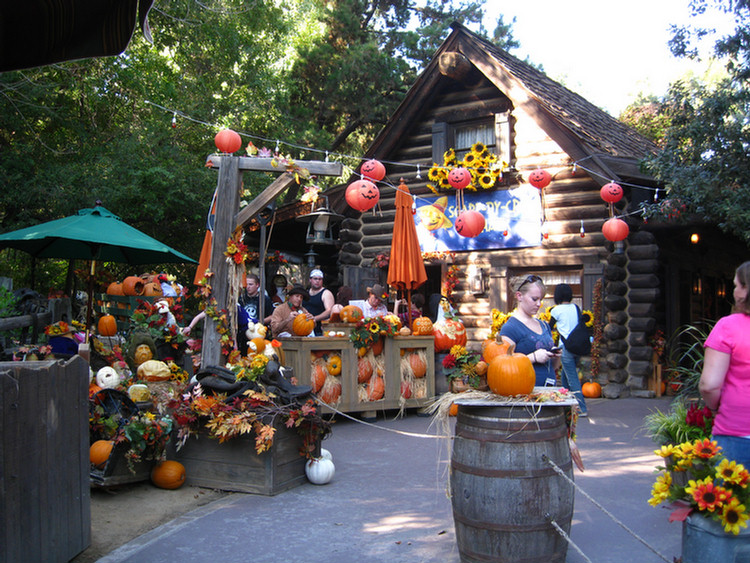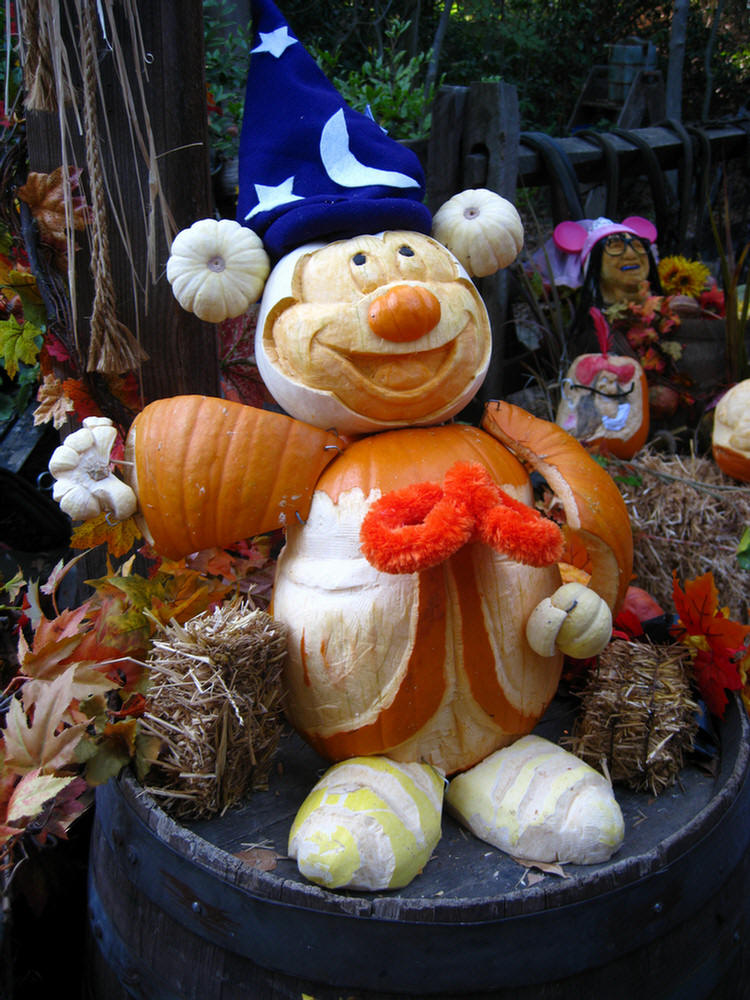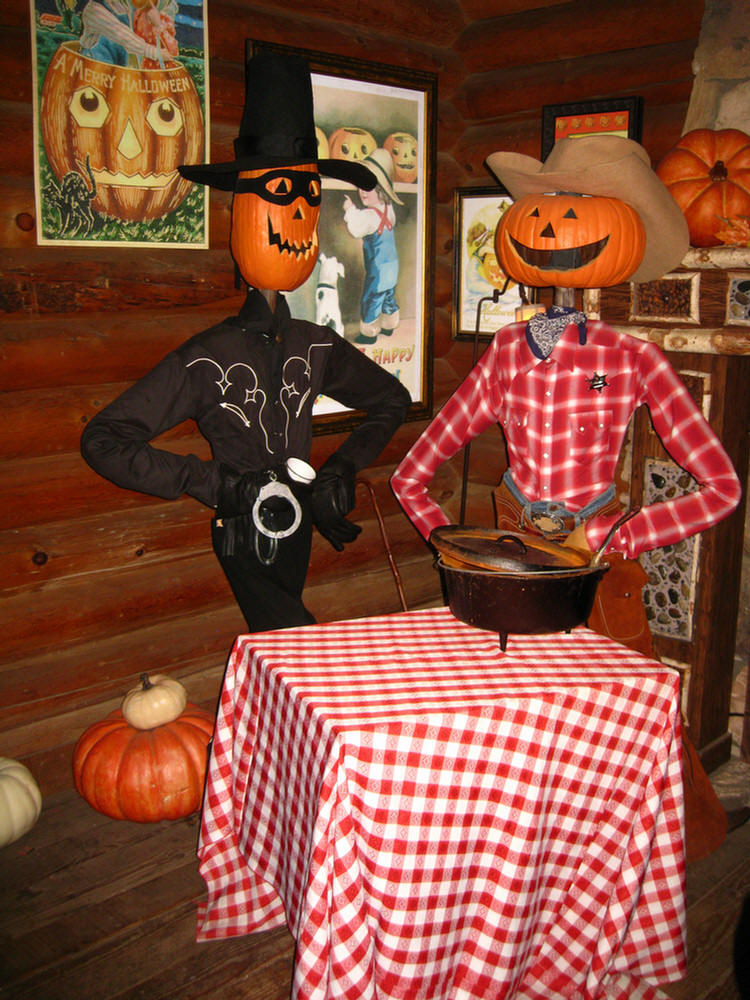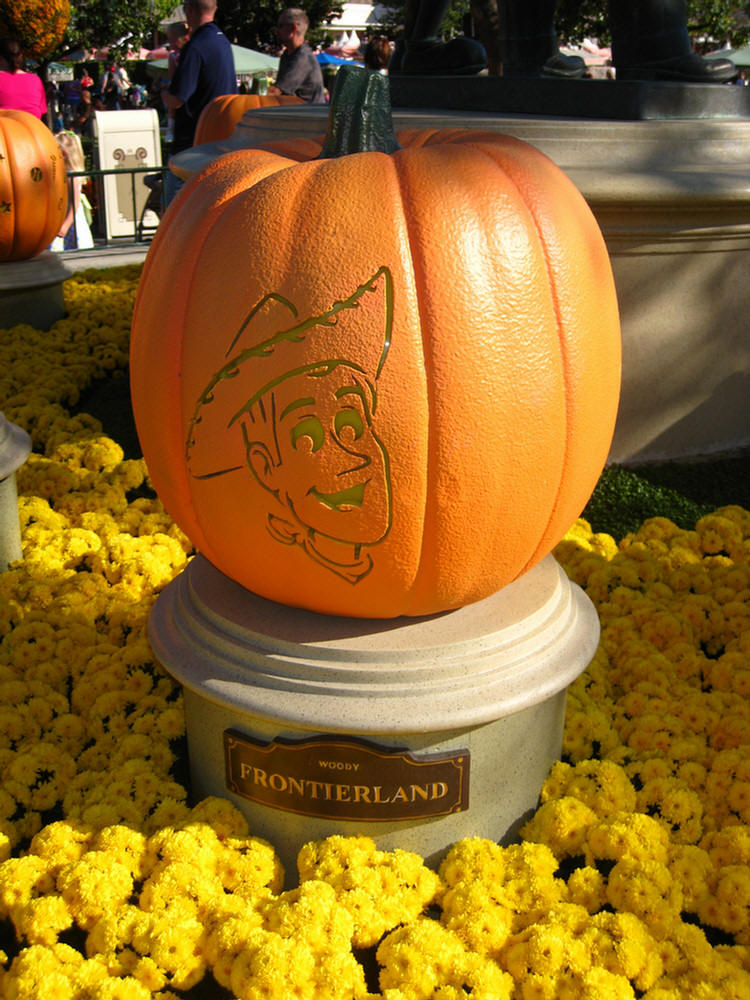Entering The Magic Kingdom

1:20, right on "schedule"

 A
beautiful Autum day!
A
beautiful Autum day!
Frontierland

The Mark Twain Riverboat is an attraction, located at the Disneyland theme park in Anaheim, California, on which passengers embark on a scenic, 12-minute journey around the Rivers of America. Originally named the Mark Twain Steamboat when the park opened in 1955, the stately, 5/8-scale stern-wheeler was the first functional riverboat to be built in the United States for fifty years.
Did you know? - The Rivers of America is an artificial river found in the Frontierland district of the Magic Kingdom-classed Disney theme parks around the world. The first river was built in Disneyland when the park opened in 1955. It surrounds Tom Sawyer Island, which can be reached by rafts traveling from the Frontierland mainland. Additionally, there are other water-based vehicles which are found on the river. The sights along the Rivers include a Native American tribe, a burning cabin (though the cabin at Disneyland hasn't been burning for years), and various animatronic wildlife.

Did you know? - The wheelhouse, where the riverboat's pilot is stationed, is also located on the upper deck. The lower level of the wheelhouse features a sleeping area and a sink to maintain the illusion of this being the captain's living quarters. At the pilot's discretion, a small number of passengers may be given permission to ride in the wheelhouse for the voyage, after which they are presented with souvenir Pilot Certificates. The pilot signals the departure and arrival of the Mark Twain using a horn and bell system, along with various signals to other river craft attractions.
Because the riverboat travels along an I-beam guide rail throughout the ride, the pilot does not maneuver the ship. Instead, the pilot serves as lookout for other river traffic, such as the Davy Crockett's Explorer Canoes and the Rafts to Pirate's Lair on Tom Sawyer Island, and communicates his observations with the boiler engineer.
The boiler engineer is stationed on the bottom deck towards the stern. This is where the throttle and reverser are located. From here, the boiler engineer controls the speed and direction of the riverboat. Steam from the boiler is used to power the paddle wheels and thus pushes the craft along its guide way. The voyage on the Rivers of America around Tom Sawyer Island features pre-recorded narration by a riverboat guide voiced by Thurl Ravenscroft and by an another actor portraying Mark Twain, who speaks of his days piloting a riverboat. The narration playback, operated by the pilot via a control panel in the pilot house, points out the sights.

Did you know? - On the first "fill-the-river" day, the water that was pumped in to the Rivers of America soaked through the riverbed. Fowler (the ride designer) quickly found a supply of clay to replace the soil stabilizer used to line the river, and the second "fill-the-river" day was successful.
The Mark Twain had its maiden voyage on July 13, 1955, four days before the park officially opened, for a private party celebrating Walt and Lillian Disney's 30th wedding anniversary. Before the party, as Fowler was checking to make sure everything would be ready for the 300 invited guests, he found Lillian sweeping the decks of debris and joined in to help her. Disneyland's opening day brought further problems for the ‘’Mark Twain’’. Actress Irene Dunne, star of the movie Showboat, had trouble breaking a bottle of water (from many major American rivers) across the vessel's bow for its christening on Dateline Disney. During the riverboat's first official voyage, when the crowd moved to one side of the boat to view a passing scene of an Indian encampment or other sight, the boat would list from the side and water poured over the deck, as no one had determined the Mark Twain's maximum safe passenger capacity.




Did you know? - After a rough start, the Mark Twain has had a successful 50-year-career as a theme park attraction. During its first few years of operation, passengers could buy a non-alcoholic mint julep aboard or listen to card and checker players re-enact dialogue of that era. Occasionally the Disneyland band would play music on the lower deck bow to entertain both the passengers and the theme park visitors on the river banks.
The Mark Twain underwent a major refurbishment during the Spring of 1995, during which all the decks and the boiler were replaced. When the Rivers of America was drained in 2002, the boat was noted to have considerable hull damage. It underwent a refurbishment in 2004 to repair the hull, which included replacing the keel.[2] For the park's 50th Anniversary celebration in 2005, a new, more colorful paint job was applied to the durable riverboat. For the Chirstmas 2009 release of The Princess and the Frog, the riverboat will be used as a stage for a show that will be based on the movie.
Billy Hill And The Hillb

Billy Hill and the Hillbillies are a musical/variety group at Disneyland in Anaheim, California. The group performs a bluegrass country-music-centered show along with classic rock and rap (performed in a country and bluegrass style).

Billy Hill and the Hillbillies perform 5 days a week inside the Golden Horseshoe Saloon


Notice arms interlocked and playing their instruments.... Very talented
Off To Big Thunder Ranch


Who is our friend?

You can talk to the carvers

Mickey!!
The oumpkin carvers are amazing!!!

Spooky
Did you know? - A jack-o'-lantern (sometimes also spelled Jack O'Lantern) is typically a carved pumpkin. It is associated chiefly with the holiday Halloween, and was named after the phenomenon of strange light flickering over peat bogs, called ignis fatuus or jack-o'-lantern. In a jack-o'-lantern, typically the top is cut off, and the inside flesh then scooped out; an image, usually a monstrous face, is carved onto the outside surface, and the lid replaced. At night a light is placed inside to illuminate the effect. The term is not particularly common outside North America, although the practice of carving lanterns for Halloween is.


Sue has a new friend
Did you know? - An old Irish folk tale tells of Stingy Jack, a lazy yet shrewd farmer who uses a cross to trap the Devil. One story says that Jack tricked the Devil into climbing an apple tree, and once he was up there Jack quickly placed crosses around the trunk or carved a cross into the bark, so that the Devil couldn't get down. Another myth says that Jack put a key in the Devil's pocket while he was suspended upside-down.


Which one is the pumpkin?




A REAL spider... Not from Disney

A little grooming going on here

I'll bet the socialist Obama eats the turkey this year or passes it out to this
socialist friends


A new eating establishment

Decorated for the holidays

Let's Head For The Flag Ceremony On Main Street



Pumpkins everywhere... See eight of them?



Not that is decorated
Big Mickey


The Flag Ceremony
Did you know? - Every evening at dusk since the September 11th 2001 attacks, there is a military-style flag ceremony to lower the American Flag for the day, performed by a regiment of the Disneyland Security Personnel. The ceremony usually begins at 4:30 or 4:45pm.
 The Disneyland Band, which has been part of the park since its opening, plays the role of the Town Band on Main Street, U.S.A. It also breaks out into smaller groups like the Main Street Strawhatters, the Hook and Ladder Co., and the Pearly Band in Fantasyland.
The Disneyland Band, which has been part of the park since its opening, plays the role of the Town Band on Main Street, U.S.A. It also breaks out into smaller groups like the Main Street Strawhatters, the Hook and Ladder Co., and the Pearly Band in Fantasyland.


Assembling for the lowering of the flag




Singing of the National Anthem
Did you know? - "The Star-Spangled Banner" is the national anthem of the United States of America. The lyrics come from "Defence of Fort McHenry", a poem written in 1814 by the 35-year-old amateur poet Francis Scott Key after witnessing the bombardment of Fort McHenry by Royal Navy ships in Chesapeake Bay during the Battle of Baltimore in the War of 1812.
The poem was set to the tune of a popular British drinking song, written by John Stafford Smith for the Anacreontic Society, a men's social club in London. "The Anacreontic Song" (or "To Anacreon in Heaven"), set to various lyrics, was already popular in the United States. Set to Key's poem and renamed "The Star-Spangled Banner", it would soon become a well-known American patriotic song. With a range of one and a half octaves, it is known for being difficult to sing. Although the song has four stanzas, only the first is commonly sung today, with the fourth ("O thus be it ever when free men shall stand...") added on more formal occasions.
"The Star-Spangled Banner" was recognized for official use by the Navy in 1889 and the President in 1916, and was made the national anthem by a congressional resolution on March 3, 1931 (46 Stat. 1508, codified at 36 U.S.C. § 301), which was signed by President Herbert Hoover.
Before 1931, other songs served as the hymns of American officialdom. "Hail, Columbia" served this purpose at official functions for most of the 19th Century. "My Country, 'Tis of Thee", whose melody was derived from the British national anthem,[2] also served as a de facto anthem before the adoption of "The Star-Spangled Banner." Following the War of 1812 and subsequent American wars, other songs would emerge to compete for popularity at public events, among them "The Star-Spangled Banner"


Awaiting The Duda's

